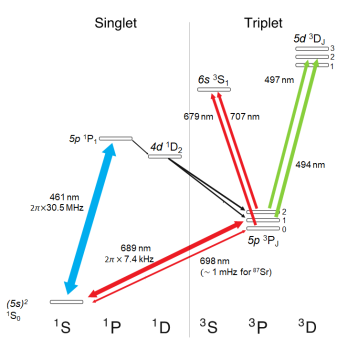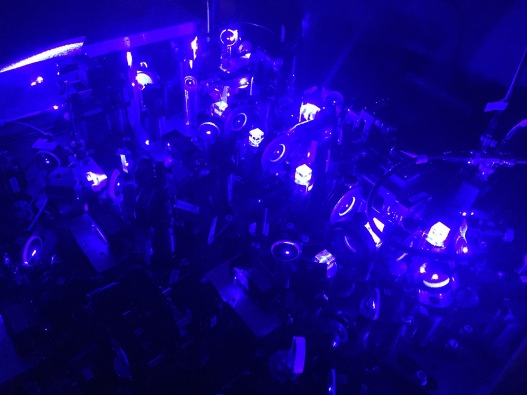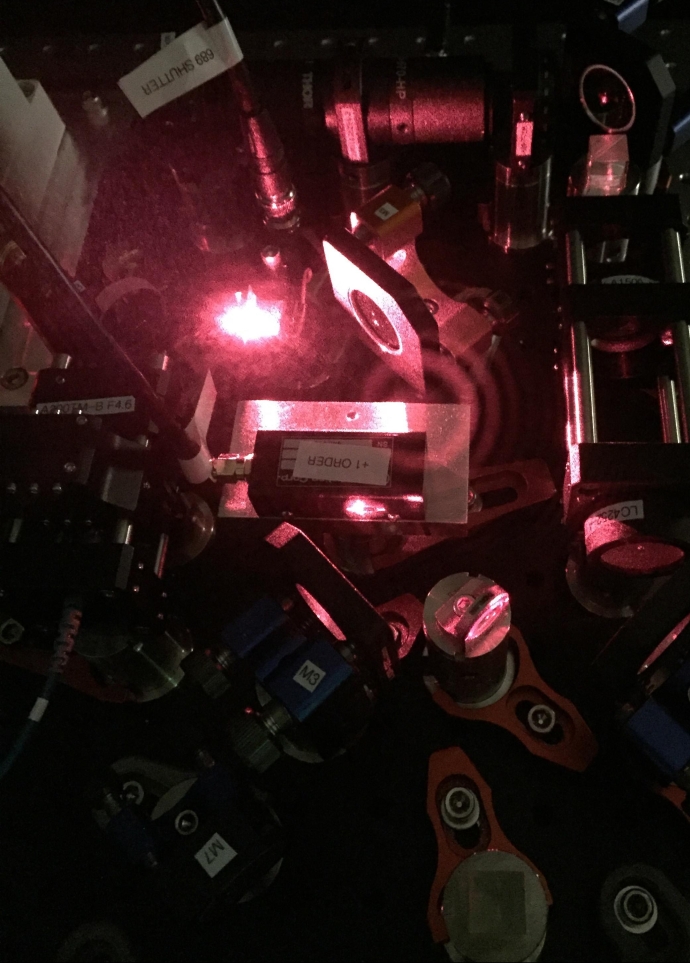I finished reading a translation of Don Quixote this past spring. Miguel de Cervantes wrote the novel during the 1600s. The hero, a Spanish gentleman, believes the tales of chivalry’s golden days. He determines to outdo his heroes as a knight. Don Quixote enlists a peasant, Sancho Panza, to serve as his squire. Bony Don Quixote quotes classical texts; tubby Sancho Panza can’t sign his name. The pair roams the countryside, seeking adventures.
Don Quixote might have sold more copies than any other novel in history. Historians have dubbed Don Quixote “the first modern novel”; “quixotic” appears in English dictionaries; and artists and writers still spin off the story. Don Quixote reverberates throughout the 500 years that have followed it.
Cervantes, I discovered, had grasped a paradox that mathematicians had exposed last century.

Artists continue to spin off Don Quixote.
Don Quixote will vanquish so many villains, the pair expects, rulers will shower gifts on him. Someone will bequeath him a kingdom or an empire. Don Quixote promises to transfer part of his land to Sancho. Sancho expects to govern an ínsula, or island.
Sancho’s expectation amuses a duke and duchess. They pretend to grant Sancho an ínsula as a joke. How would such a simpleton rule? they wonder. They send servants and villagers to Sancho with fabricated problems. Sancho arbitrates the actors’ cases. Grossman translates one case as follows:
the first [case] was an engima presented to him by a stranger, who said:
“Señor, a very large river divided a lord’s lands into two parts [ . . . ] a bridge crossed this river, and at the end of it was a gallows and a kind of tribunal hall in which there were ordinarily four judges who applied the law set down by the owner of the river, the bridge, and the lands, which was as follows: ‘If anyone crosses this bridge from one side to the other, he must first take an oath as to where he is going and why; and if he swears the truth, let him pass; and if he tells a lie, let him die by hanging on the gallows displayed there, with no chance of pardon.’ Knowing this law and its rigorous conditions, many people crossed the bridge, and then, when it was clear that what they swore was true, the judges let them pass freely. It so happened, then, that a man once took the oath, and he swore and said that because of the oath he was going to die on the gallows, and he swore to nothing else. The judges studied the oath and said: ‘If we allow this man to pass freely, he lied in his oath, and according to the law he must die; and if we hang him, he swore that he was going to die on this gallows, and having sworn the truth, according to the same law he must go free.’ Señor Governor, the question for your grace is what should the judges do with the man.”
Cervantes formulated a paradox that looks, to me, equivalent to Russell’s barber paradox. Bertrand Russell contributed to philosophy during the early 1900s. He concocted an argument called the Russell-Zermelo paradox, which I’ll describe later. An acquaintance tried to encapsulate the paradox as follows: Consider an adult male barber who shaves all men who do not shave themselves. Does the barber shave himself?
Suppose that the barber doesn’t. (Analogously, suppose that the smart aleck in Panza’s paradox doesn’t lie.) The barber is a man whom the barber shaves. (The smart aleck must survive.) Hence the barber must shave himself. (Hence the traveler lies.) But we assumed that the barber doesn’t shave himself. (But we assumed that the traveler doesn’t lie.) Stalemate.

A barber plays a role in Don Quixote as in the Russell-Zermelo-like paradox. But the former barber has a wash basin that Don Quixote mistakes for a helmet.
Philosophers and mathematicians have debated to what extent the barber paradox illustrates the Russell-Zermelo paradox. Russell formulated the paradox in 1902. The mathematician Ernst Zermelo formulated the paradox around the same time. Mathematicians had just developed the field of set theory. A set is a collection of objects. Examples include the set of positive numbers, the set of polygons, and the set of readers who’ve looked at a Quantum Frontiers post.
Russell and Zermelo described a certain set of sets, a certain collection of sets. Let’s label the second-tier sets
etc.
![]()
Each second-tier set can contain elements. The elements can include third-tier sets
etc.

But no third-tier set equals the second-tier set
. That is, no second-tier set
is element of itself.

Let contain every set that does not contain itself. Does the first-tier set
contain itself?
![]()
Suppose that it does: for some
.
is an element of itself. But, we said, “no second-tier set
is an element of itself.” So
must not be an element of itself. But
“contain[s] every set that does not contain itself.” So
must contain itself. But we just concluded that
doesn’t. Stalemate.
The Stanford Encyclopedia of Philosophy synopsizes the Russell-Zermelo paradox: “the paradox arises within naïve set theory by considering the set of all sets that are not members of themselves. Such a set appears to be a member of itself if and only if it is not a member of itself.”
One might resolve the Russell-Zermelo paradox by concluding that no set exists. One might resolve the barber paradox by concluding that no such barber exists. How does Sancho resolve what I’ll dub Panza’s paradox?
He initially decrees, “‘let the part of the man that swore the truth pass freely, and hang the part that told a lie.’”1 The petitioner protests: Dividing the smart aleck will kill him. But the law suggests that the smart aleck should live.
Sancho revises his decree:
“since the reasons for condemning him or sparing him are balanced perfectly, they should let him pass freely, for doing good is always more praiseworthy than doing evil, and I’d sign this with my own name if I knew how to write, and in this case I haven’t said my own idea but a precept that came to mind, one of many that was given to me by my master, Don Quixote [ . . . ] when the law is in doubt, I should favor and embrace mercy.”
One can resolve the barber’s paradox by concluding that such a barber cannot exist. Sancho resolves Panza’s paradox by concluding that the landowner’s law cannot govern all bridge-crossings. The law lacks what computer scientists would call an “edge case.” An edge case falls outside the jurisdiction of the most-often-used part of a rule. One must specify explicitly how to process edge cases, when writing computer programs. Sancho codes the edge case, supplementing the law.

Upon starting to read about Sancho’s trial, I sat bolt upright. I ran to my laptop upon finishing. Miguel de Cervantes had intuited, during the 1600s, a paradox not articulated by mathematicians until the 1900s. Surely, the literati had pounced on Cervantes’s foresight?
Mathematics writer Martin Gardner had. I found also two relevant slides in a Powerpoint and three relevant pages in an article. But more critics classified Panza’s paradox as an incarnation of the liar’s paradox than invoked Russell.
Scholars have credited Cervantes with anticipating, and initiating, literary waves that have propagated for four centuries. Perhaps we should credit him with anticipating mathematics not formalized for three.
1This decree evokes the story of King Solomon and the baby. Two women bring a baby to King Solomon. Each woman claims the baby as hers. “Cut the baby in two,” Solomon rules, “and give half to each woman.” One woman assents. The other cries, “No! Let her have the child; just don’t kill the baby.” The baby, Solomon discerns, belongs to the second woman. A mother would rather see her child in someone else’s home than see her child killed. Sancho, like Solomon, rules that someone be divided in two. But Sancho, lacking Solomon’s wisdom, misapplies Solomon’s tactic.





